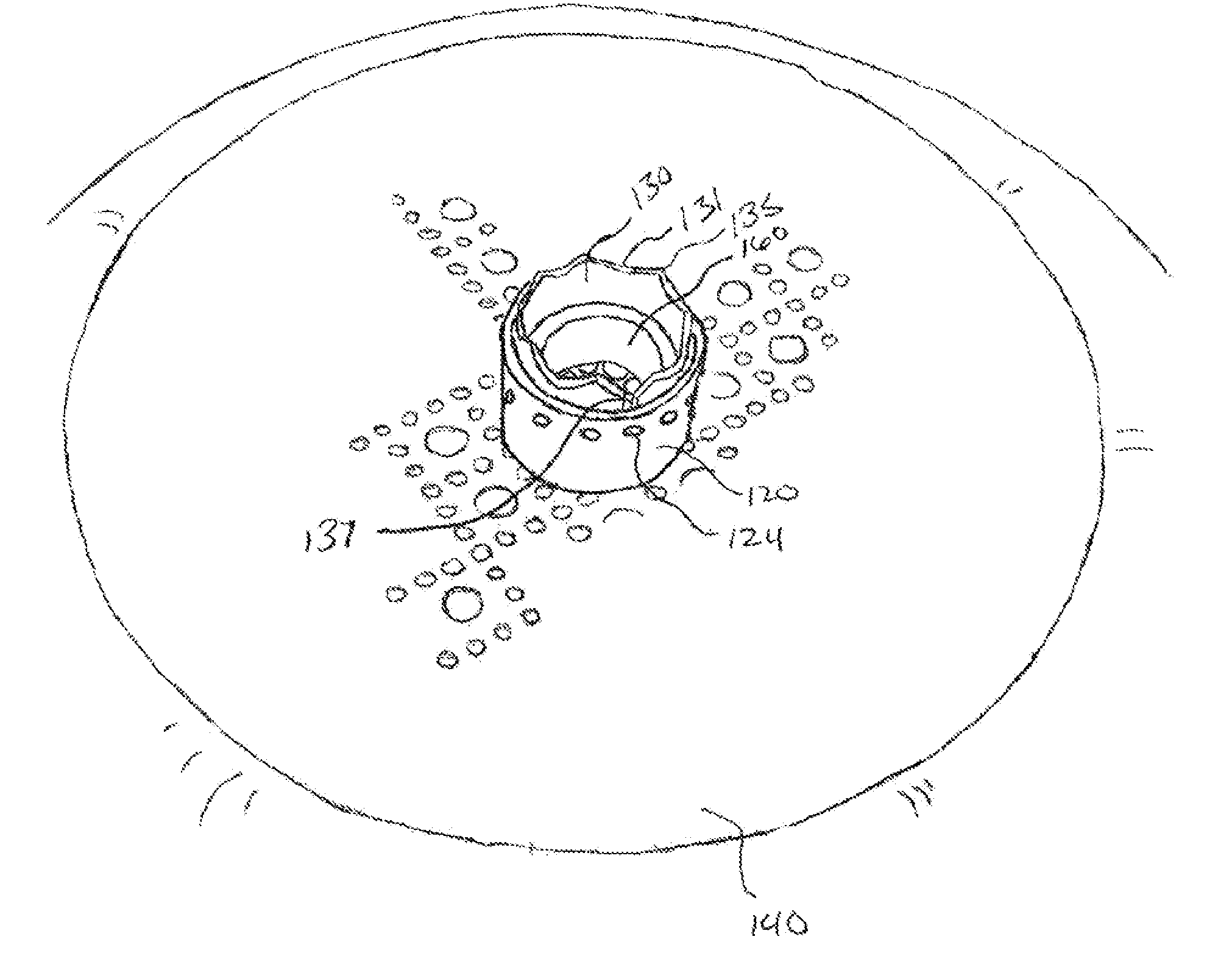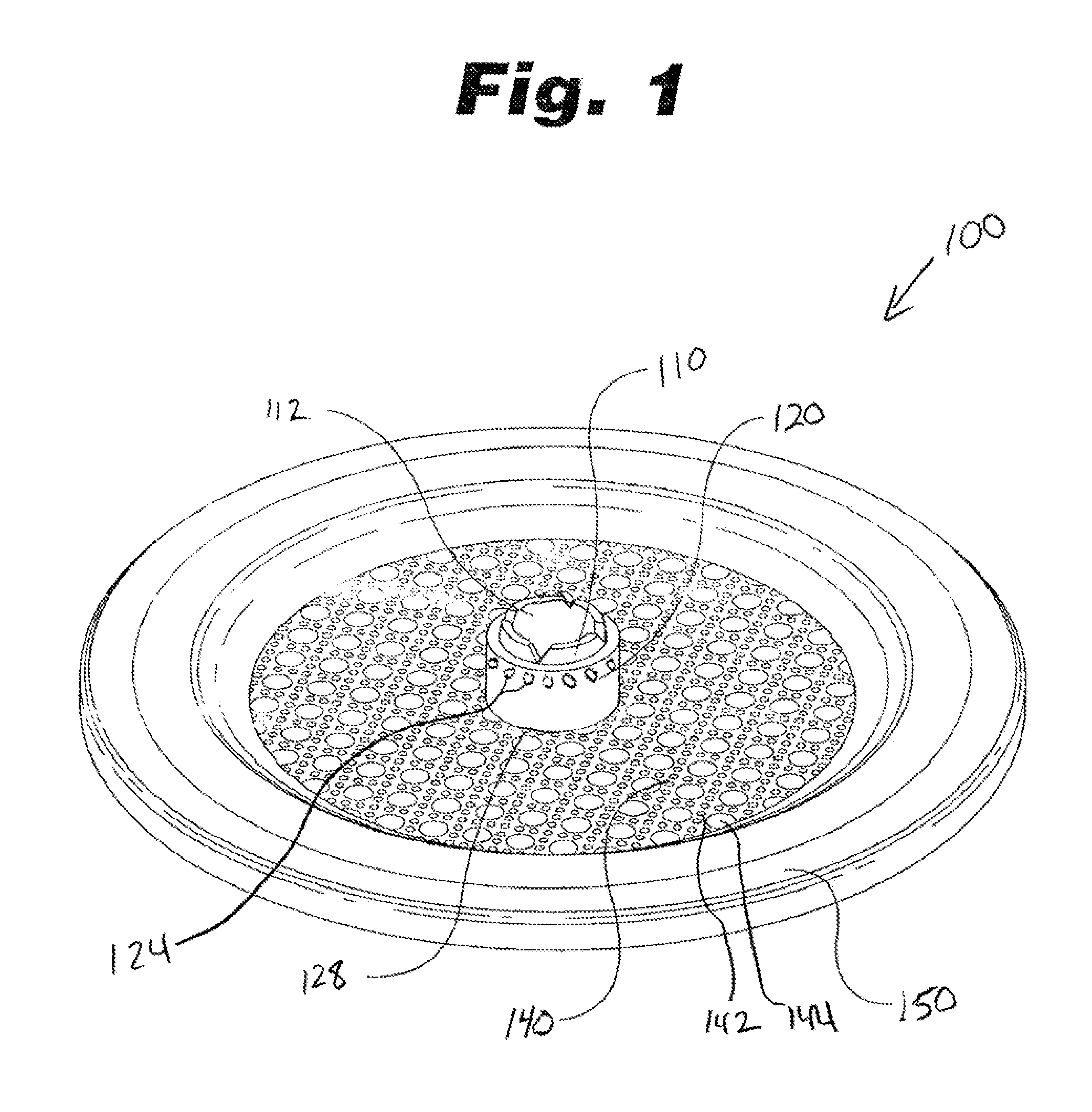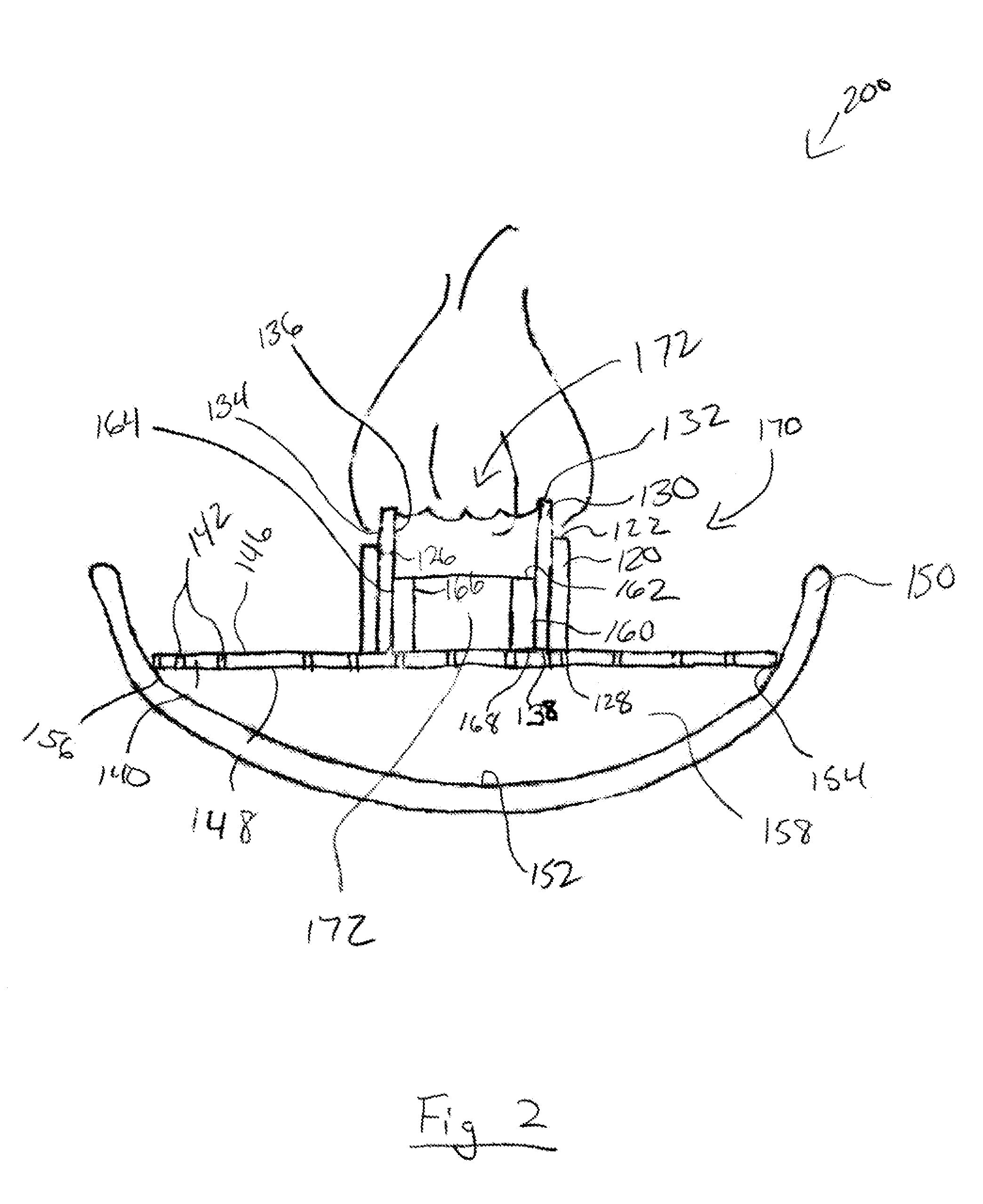Fuel Burning System and Method
a fuel burner and fuel technology, applied in the direction of burners, combustion regulation, combustion types, etc., can solve the problems of slow heat delivery efficiency, limited rate of volatile chemical delivery, slow melting rate of wax around the wick and creating melt pools, etc., to achieve the effect of increasing oxygen delivery
- Summary
- Abstract
- Description
- Claims
- Application Information
AI Technical Summary
Benefits of technology
Problems solved by technology
Method used
Image
Examples
Embodiment Construction
[0069]While this invention is susceptible of embodiment in many different forms, there are shown in the drawings, and will be described herein in detail, specific embodiments thereof with the understanding that the present disclosure is to be considered as an exemplification of the principles of the invention and is not intended to limit the invention to the specific embodiments illustrated.
[0070]System Overview.
[0071]FIG. 1 shows an embodiment of a solid fuel burner system 100. The burner system 100 comprises a hollow-core wick 110, a burn chamber 112, a wick sheath 120, a melting grate 140, and a fuel reservoir 150, such as a bowl or basin. FIGS. 2-3 show an embodiment of the burner system 100 of FIG. 1 with an alternative embodiment hollow-core wick 130 and an inner wick support ring 160. The hollow-core wick 130 of FIGS. 2-3 is substituted for the hollow-core wick 110 of FIG. 1.
[0072]In general operation, a solid fuel, such as solid fuel 201, is placed on the melting grate. The ...
PUM
 Login to View More
Login to View More Abstract
Description
Claims
Application Information
 Login to View More
Login to View More - R&D
- Intellectual Property
- Life Sciences
- Materials
- Tech Scout
- Unparalleled Data Quality
- Higher Quality Content
- 60% Fewer Hallucinations
Browse by: Latest US Patents, China's latest patents, Technical Efficacy Thesaurus, Application Domain, Technology Topic, Popular Technical Reports.
© 2025 PatSnap. All rights reserved.Legal|Privacy policy|Modern Slavery Act Transparency Statement|Sitemap|About US| Contact US: help@patsnap.com



